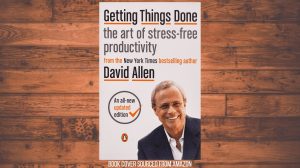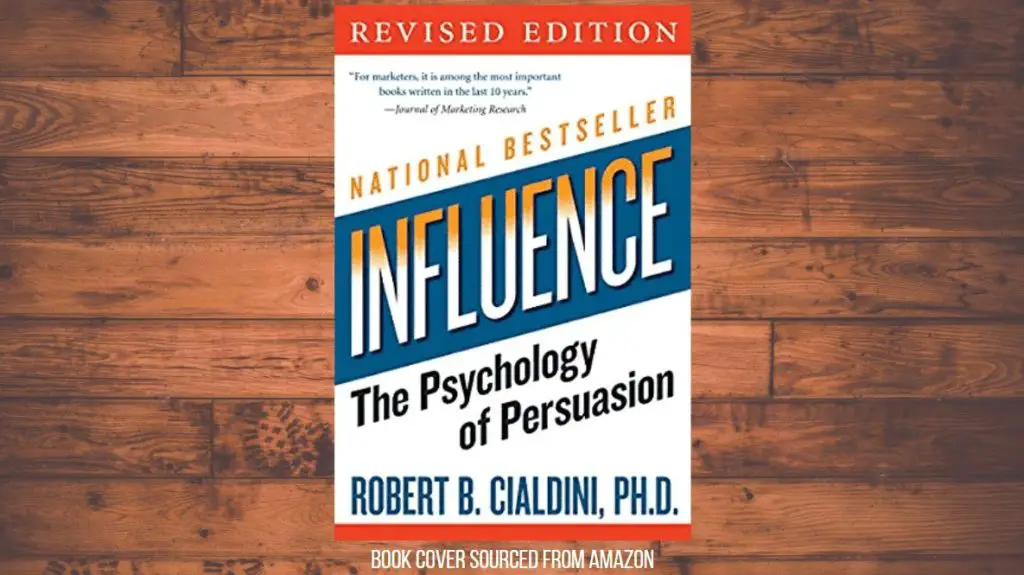This post may contain affiliate links, which means I’ll receive a commission if you purchase through my links, at no extra cost to you. Please read full disclosure for more information.
ABOUT
- Title: Think Like a Monk
- Sub-title: Train Your Mind for Peace and Purpose Every Day
- Author: Jay Shetty
- About the author: Jay Shetty is a social media star who rose in popularity by teaching what he learned from his three years as a Vedic monk. He has billions of views and millions of followers across various social media platforms. In 2017, he was named to Forbes 30-under-30 list. Jay also runs the podcast On Purpose. Prior to his journey as a Monk, Jay was pressured to take a traditional career path.
- Pages: 352
- Published: 2020
- Link to book
HIGH-LEVEL SUMMARY
Think Like a Monk was written to help empower readers to find peace, calm, and purpose. The author, Jay Shetty, does this by drawing on his three-year experience as a monk to give readers actionable steps they can take to think and act as a monk would.
He gives an analogy that if you wanted to know how to dominate the basketball court, you would ask Michael Jordan. If you wanted to train your mind to find peace, calm, and purpose, you would ask a Monk.
Jay grew up in a typical middle-class Indian family that prioritized school and career. His options were to become a doctor, lawyer, or failure. And that’s what he was focused on until he was moved by a monk he heard speak at an event.
The effect of that event was so profound that Jay dropped everything and became a Vedic monk for three years. After three years, one of his elder monks advised that Jay return home and spread his knowledge and wisdom with the world.
Since then, Jay Shetty has become a social media star, leveraging his platform to share what he knows and make a difference in the lives of others. Now more than ever, people are subjected to negativity, stress, ego, fear, and feel like they lack purpose or meaning.
Think Like a Monk gives advice and lays out a path to overcome these obstacles that block us from our potential.
Topics in the book include:
- Living your true identity, not the identity of others.
- Dealing with and eliminating negativity.
- Accepting fears, building a relationship with your fears, and detaching from them to liberate yourself.
- Finding your purpose and pursuing that purpose with intention.
- The way to true happiness and contentment.
- The importance of a morning and night routine.
- Meditation and breathing practices.
- Training the mind so you are in control of it.
- Living with humility and avoiding a developing ego.
- Building and maintaining meaningful relationships.
- Practicing gratitude and serving others.
RECOMMENDATION
I highly recommend Think Like a Monk to any individual. The content shared can help everyone, not just in their career, but in their whole life. This book can help those who feel swarmed by the thoughts in their head and the stresses in life.
Implementing the steps that Jay Shetty lays out will help you conquer your mind so you can feel at peace and unlock your potential.
The book is an easy read and comprehensive. Take a week to read this book and you may come across something eye-opening to you that can change the way you think or live. You can be career-driven while still being mindful and pursuing your passion.
I think this book can be a great bridge between living how society pushes you to live (go to school, get a good job, have a family) and how YOU want to live.
If you like this post, you’ll enjoy these as well:
- 21 Ways to Invest in Yourself and Your Career to Build a Better Life
- Book Review: Limitless by Jim Kwik
- Fixed Mindset vs Growth Mindset
- How to Reduce Stress (15 Ways to do It)
TOP 25 TAKEAWAYS
- In no particular order
1. If you wanted to know how to dominate the basketball court you would ask Michael Jordan. Well, if you want to train your mind to find peace, calm, and purpose, you should ask a Monk.
2. The goal of monk thinking is a life free of ego, envy, lust, anxiety, anger, bitterness, and baggage. The more we can evaluate, understand, train, and strengthen our relationship with the mind, the more successfully we can navigate our lives and overcome challenges.
3. Our identity is wrapped up in what others think of us or, more accurately, what we think others think of us.
4. Our values are influenced by whatever absorbs our mind. Be conscious of what absorbs your mind.
5. Who you surround yourself with helps you stick to your values and achieve your goals.
6. We have 3 core emotional needs: peace, love, and understanding. Negativity – in conversation, emotions, and actions – often springs from a threat to one of three needs: a fear that bad things are going to happen (loss of peace), a fear of not being loved (loss of love), or a fear of being disrespected (loss of understanding).
7. Approach negativity by taking a step back and removing yourself from the emotional charge of the moment. You aren’t obligated to react one way or another. How you react depends on your interpretation.
8. When we tune out the opinions, expectations, and obligations of the world around us, we begin to hear ourselves. The less time you fixate on everyone else, the more time you have to focus on yourself. The more we define ourselves in relation to the people around us, the more lost we are.
9. We have so much to offer the world, but fear and anxiety disconnect us from our abilities. Fear isn’t bad; it’s simply a warning flag. It’s what we do with that signal that matters. Sometimes fear is a critical warning to help us survive through danger, but most of the time we feel is anxiety related to everyday concerns about money, jobs, and relationships.
10. In order to change our relationship with fear, we have to change our perception of it. Once we can see the value that fear offers, we can change how we respond. What we should really fear is missing the opportunities fear offers.
11. If you only find joy in your own successes, you are limiting your joy. Find joy in the success of others as well. When you take pleasure in the successes of your friends and family, say 10 people, then you will feel the joy of 10 people.
12. Because fear is attachment, the cure for fear is detachment. Detachment is about understanding and accepting that all things are temporary and that we cannot truly own or control anything. With that in mind, we can fully appreciate things and people in our life. Detaching means escaping the hold of the senses, earthly desires, of the material world. You have the perspective of an objective observer. Only by detaching can we truly gain control of the mind. Detachment is not that you should own nothing, but that nothing should own you.
13. Material gratification is external, but happiness is internal. Happiness and fulfillment come from mastering the mind and connecting the soul, not from objects or attainments. Purpose and meaning, not success, lead to true content.
14. Focus on the process, not the outcome. If you’re in love with the day-to-day process, you can do it with depth, authenticity, and a desire to make an impact.
15. Your breathing changes with your emotions. Controlled breathing is an immediate way to shift your energy on the fly.
16. Passion + Expertise + Usefulness = Dharma. Living your dharma, or “your calling,” is a certain route to fulfillment. Pay attention, cultivate self-awareness, feed your strengths, and you will find your way. And once you discover your dharma, pursue it.
17. Instead of listening to our minds, we must pay attention to how an idea or activity feels in our bodies. Does it bring joy? Does it appeal to you? How does your body respond? Is it alive, comfortable, positive?
18. The point of a morning routine to have a simple structure that spares you from the stressful complexity of decisions and variation. The energy and mood of the morning carry through the day, so making life more meaningful begins there. You will also need an evening routine. Routine frees your mind. Rules and routines ease our cognitive burden so we have the bandwidth for creativity.
19. Reframe your thoughts. Instead of looking at what goes wrong, tell your mind where it goes right. Reframe your self-criticism in terms of knowledge. Many of the frustrations we endure can be seen as blessings because they urge us to grow and develop.
20. Treat yourself with the same love and respect you would show others. We say things to ourselves that we would never say to people we love.
21. Stay present. When thoughts of scenarios ahead turn into anxiety and worry or unrealistic aspirations, they are no longer productive.
22. The ego doesn’t want to be better. It wants to be seen as better. It wants you to bluff through life, pretending to be someone you are not. If you don’t break your ego, life will break it for you. Humility allows us to understand our weaknesses and wants to improve.
23. Real greatness is when you use your own achievements to teach others, and they learn how to teach others, and the greatness that you accomplished expands exponentially.
24. When you start your day with gratitude, you’ll be open to opportunities, not obstacles. Gratitude helps us overcome the bitterness and pain that we all carry with us.
25. The highest purpose is to live in service. Selflessness is the surest route to inner peace and a meaningful life.
WHAT I LIKED

Comprehensive coverage of peace, calm, and purpose
When most people think of monks, they think of meditation and peace. While this book does include those topics, it also includes a more comprehensive coverage of thinking and living like a monk.
Think Like a Monk includes chapters on the following:
- Identity
- Negativity
- Fear
- Intention
- Purpose
- Routine
- The Mind
- Ego
- Gratitude
- Relationships
- Service
Insightful personal stories from the author
Jay Shetty draws upon his wisdom he gained in his three years as a monk. On top of sharing actionable steps the reader can take, Jay shares key moments on his three year journey.
These personal stories are insightful and eye-opening. They paint a picture on what being a Vedic monk is like and what thoughts go through a new monk’s mind.
Author is a relatable person
It’s hard to relate with a monk, but easier to relate to Jay Shetty before he became a monk. He walked the common path of doing well in school to find a good job and have a long career. Many of us are on that path now so we can relate to the thoughts Jay had on his journey.
Being able to relate to the author, and his highs and lows, helps make the claims and potential progress more attainable.
“Try This” sections and diagrams kept content engaging
The book is filled with small “Try This” sections. These sections relate to the text before it and give the reader a task or activity they can complete. This, along with the diagrams, keep the book engaging and help the reader understand and implement the content he or she is reading.
BENEFITS TO YOUR LIFE AND CAREER

Master your mind and emotions
Mastering our mind is probably one of the most difficult tasks a human can embark on. Think Like a Monk will point you in the right direction of mastering your mind, your thoughts, your emotions, and your actions. This will serve you in your everyday life, at school, and at work.
Conquer your fears and unlock potential
There’s a quote commonly used for fear: “Fear kills more dreams than failure ever will.”
Fear holds many of us back from realizing our full potential. Jay Shetty shares tips on how to identify the root of your fears, accept your fears, work with your fears, and detach from your fears.
Implementing his advice may give you the courage to start taking leaps of faith that your previous self would not take.
Discover your purpose and remain aligned to it
Discovering your purpose is tough and you won’t find it overnight. Think Like a Monk will guide you on how to find your passion and purpose. Additionally, the book will share how you can stay aligned to it.
When you work aligned to your purpose or “calling,” you’ll find contentment. You may not start off in your dream career, but if you understand what your purpose is, you can stay on track so you’ll eventually be working/living the life you want.
Strip yourself of the ego that can hold you back
This is a career-oriented blog and as you progress through your career, an ego may start developing. When you get that new promotion or a big bonus, you may want to puff your chest out and feel proud.
While success and confidence are good things, ego is not. Jay describes in detail how detrimental an ego can be. By taking his advice and practicing humility, you can continue to succeed in your life and career without ego interfering.
Become positive internally and externally
During the journey of mastering your mind and emotions, you’ll become more positive internally. You’ll have positive thoughts and practice gratitude. And you’ll know how to deal with negativity and fears.
The book will also help you become more positive externally. This entails showing your gratitude to others, building healthy relationships, and going out to provide service to others. After you take care of yourself, you can begin taking care of others, which will take you far and help you feel fulfilled.
15 ACTIONS YOU SHOULD TAKE
1. Audit your life. Look at where you spend your time, where you spend your money, and what media you are exposing yourself too. Create space in your life for reflection. Spend money on things that align with your values. Eliminate social media, tv shows, etc that are not productive and positive. See: Book Review: The Productivity Project by Chris Bailey
2. When you find yourself in an emotionally charged moment, remove yourself and try to be objective.
3. Implement the 25/75 principle. For every negative person in your life, have three uplifting people. Try to surround yourself with people who are better than you in someway.
4. Surround yourself with people who help you stick to your values and achieve your goals.
5. Don’t surround yourself by gossip, conflict, and negativity. Negativity is contagious. Don’t fixate on others. Focus on yourself.
6. Take joy in the good fortune of others. You’ll not only experience your joy, but the joy of others as well.
7. Practice detachment. Understand that things are temporary and you will appreciate things more. Detach and realize nothings owns you and that you own nothing. See: Book Review: The Little Book of Stoicism by Jonas Salzgeber
8. Use your breath to short-circuit fear. Inhale slowly to a count of 4. Hold for 4. Exhale for 4. Repeat.
9. Implement meditation and breathwork into your day. Don’t look for results with meditation. Just keep doing it consistently.
10. Identify activities that you love and are inclined to do well. This could be your passion. Align with your passion. Ask yourself if you enjoy the process.
11. Create a morning and night routine and stick to it. Start off with a small and achievable routine. The point is to remove noise and decision making. Start and end the day with gratitude. Don’t use your phone between 8:00 pm at night and 10:00 am the next day.
12. Reframe the way you look at things. If you are experiencing suffering or doing things you don’t like, think of those moments as lessons and steps to your progression.
13. Treat yourself with the same love and respect you would show to others.
14. Keep relationships strong and interesting by creating new memories. Fresh experiences bring excitement into your life and build a stronger bond.
15. “Plant trees under whose shade you do not plan to sit.” Do good things for others even if you don’t receive any benefit from it. Live life in service.
RESOURCES
Think Like a Monk can be found on Amazon at this link here if you are interested in reading.



